In the last millennium, handheld vacuum cleaners were somewhat ungainly. They were big, heavy and triangular. They had to be emptied afterwards, if the dirt hadn’t already trickled out again. Dirt and muck often rattled out of the rubber filter at the bottom when I hung the vacuum cleaner back in the wall holder.
I pretty much steered clear of cordless handheld vacuums until the KitchenAid Go came along. In addition to compact household appliances, the KitchenAid range includes a round and narrow hand vacuum cleaner. The appliances share the same design, colors (grey and silver) and battery. In short, you can use the same battery for all devices in the range.
Each device is therefore sold in two versions with different prices: one version with battery and one version without. The price at the top is with battery included.
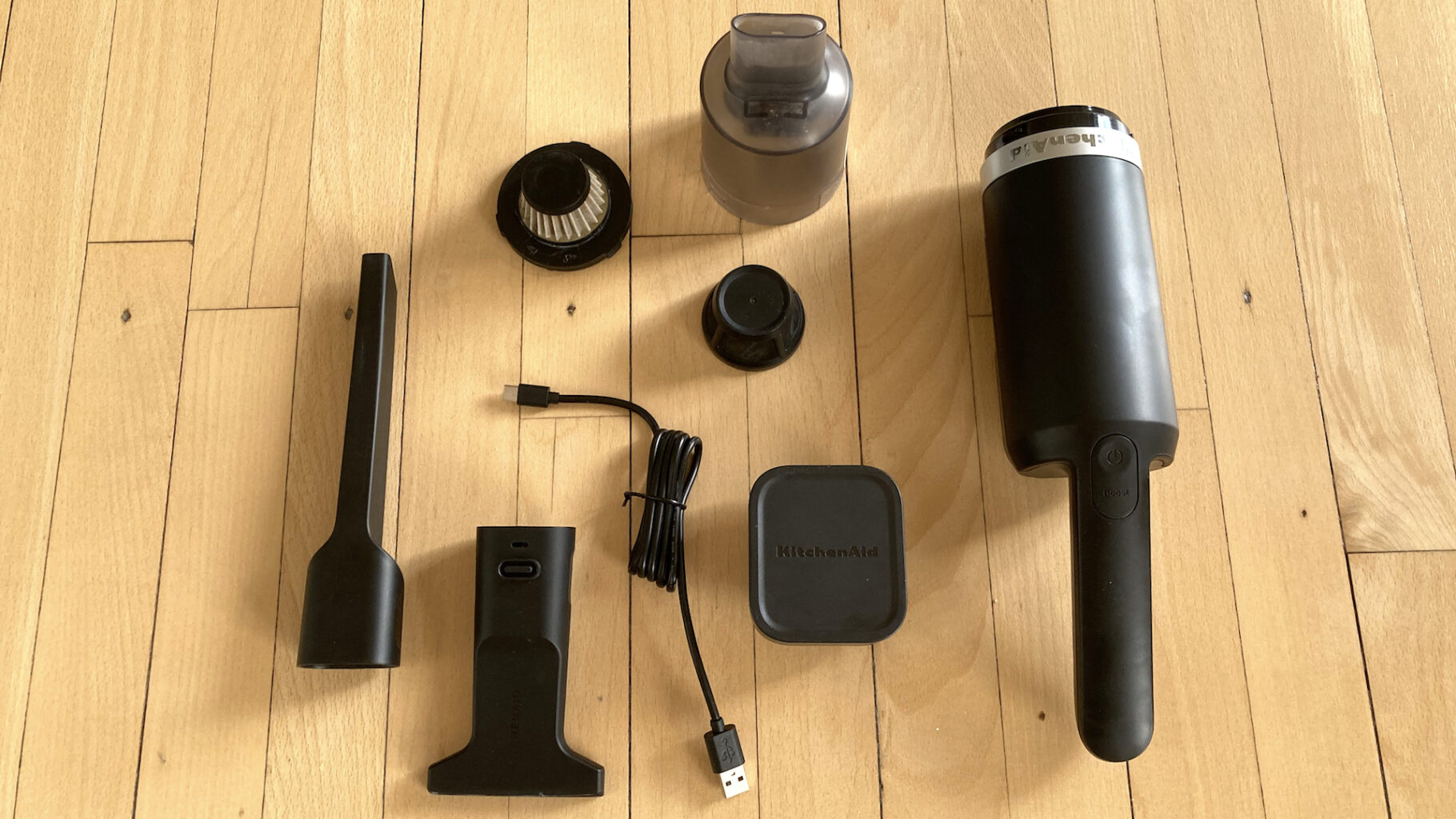
Members of the KitchenGo range cost somewhat more than similar appliances from other manufacturers. However, you ‘save’ the cost of the battery once you’ve bought one of the series’ appliances with a battery.
Cordless devices with the same battery are convenient. The name KitchenAid Go also suggests that the series can be used on the go. For example, you can take them with you on a picnic, to the cottage or on a camping vacation. The devices are also suitable for smaller kitchens with few power outlets and shelf space.
To test the concept, I used several devices from the series in the kitchen and living rooms over a few weeks. However, the focus of the test is on the KitchenAid Go Cordless Hand Vacuum.
Charging and first use
The hand vacuum, like the other devices in the Go series, requires a 12-volt lithium battery. The square battery is charged via an included USB-C cable or in a docking station. The latter must be purchased as an option.
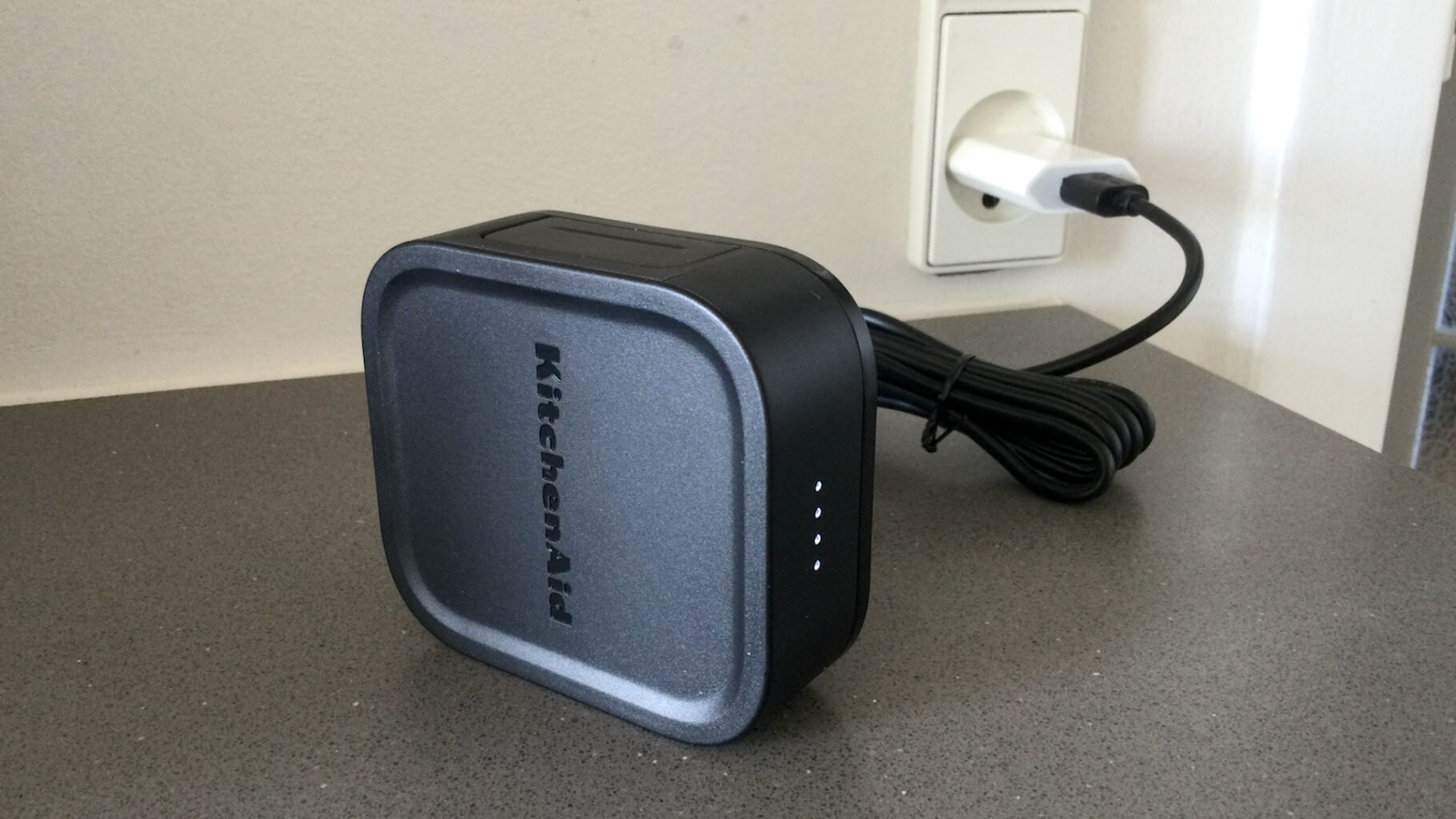
Four small LED lights on the side of the battery show how far (or how close) the battery is from being at 100 percent. Charging time is three hours.
When the four lights are bright without flashing, the battery is fully charged. You snap it into the holder on the underside of the handheld vacuum cleaner. A small notch at the top of the electrical socket makes it impossible to insert the battery incorrectly.
All KitchenAid Go series appliances have the same notch in their sockets. When you connect the battery to an appliance, the LED lights turn on briefly. The number of lights on indicates how much ‘juice’ is left in the battery.
Nozzles and features
The KitchenAid Go Cordless Hand Vacuum comes with a filter and two nozzles. One nozzle is wide and flat, the other is long and pointed. The flat one is for larger, flat surfaces and the pointed crevice nozzle for cracks and along edges.
When the filter and one of the nozzles are attached together with the battery, the vacuum cleaner weighs close to one kilogram. More precisely, 965g. I had expected (feared) that the battery would shift the balance of the handheld vacuum cleaner. This is not the case.
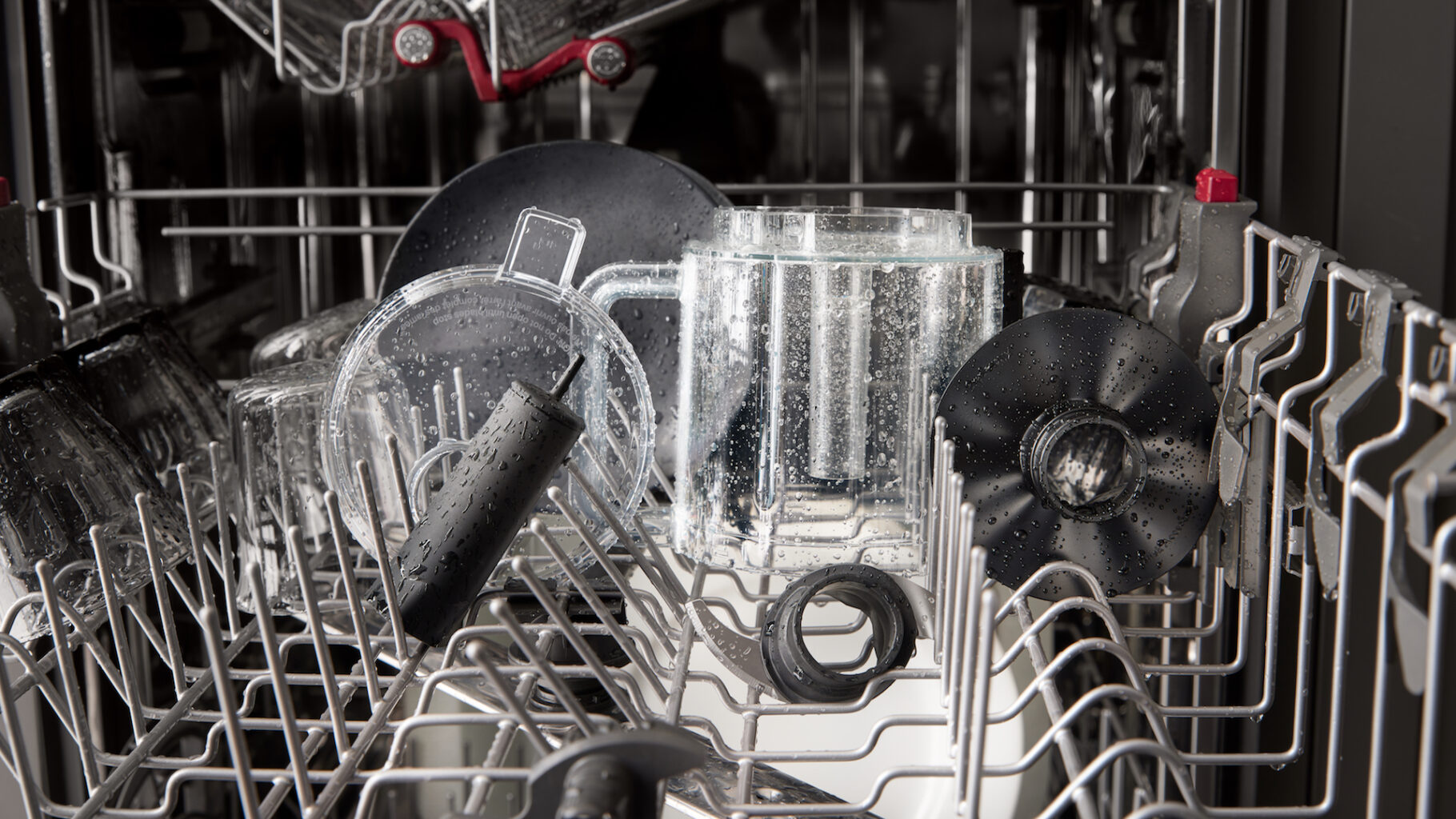
The handheld vacuum cleaner is neither heavy nor cumbersome to work with when the battery is clicked on. On the contrary, the battery provides a comfortable weight that makes the handheld vacuum cleaner easy to control and work with.
The vacuum cleaner is intended by KitchenAid as a kitchen helper, picking up crumbs and dirt in cupboards, drawers and on the floor. However, I also get in between and over sofa cushions, carpets and along the home’s sweeping moldings with ease.
With the crevice tool attached, the KitchenAid Go Cordless Hand Vacuum is eager to suck up just about anything. With an extra push of the handle button, you can switch between two types of suction: normal or turbo. Normal suction provides 24,000 rpm, boost provides up to 38,000 rpm.
Whatever I chose, the handheld vacuum was ready for anything. Lint from my project to cut cable ducts for the surround sound system was no problem. The plastic crumbs in and around the red cutting box disappeared instantly. Dust and crumbs from slippery floors and my nubby sisal carpet went up the same way through the nozzle.
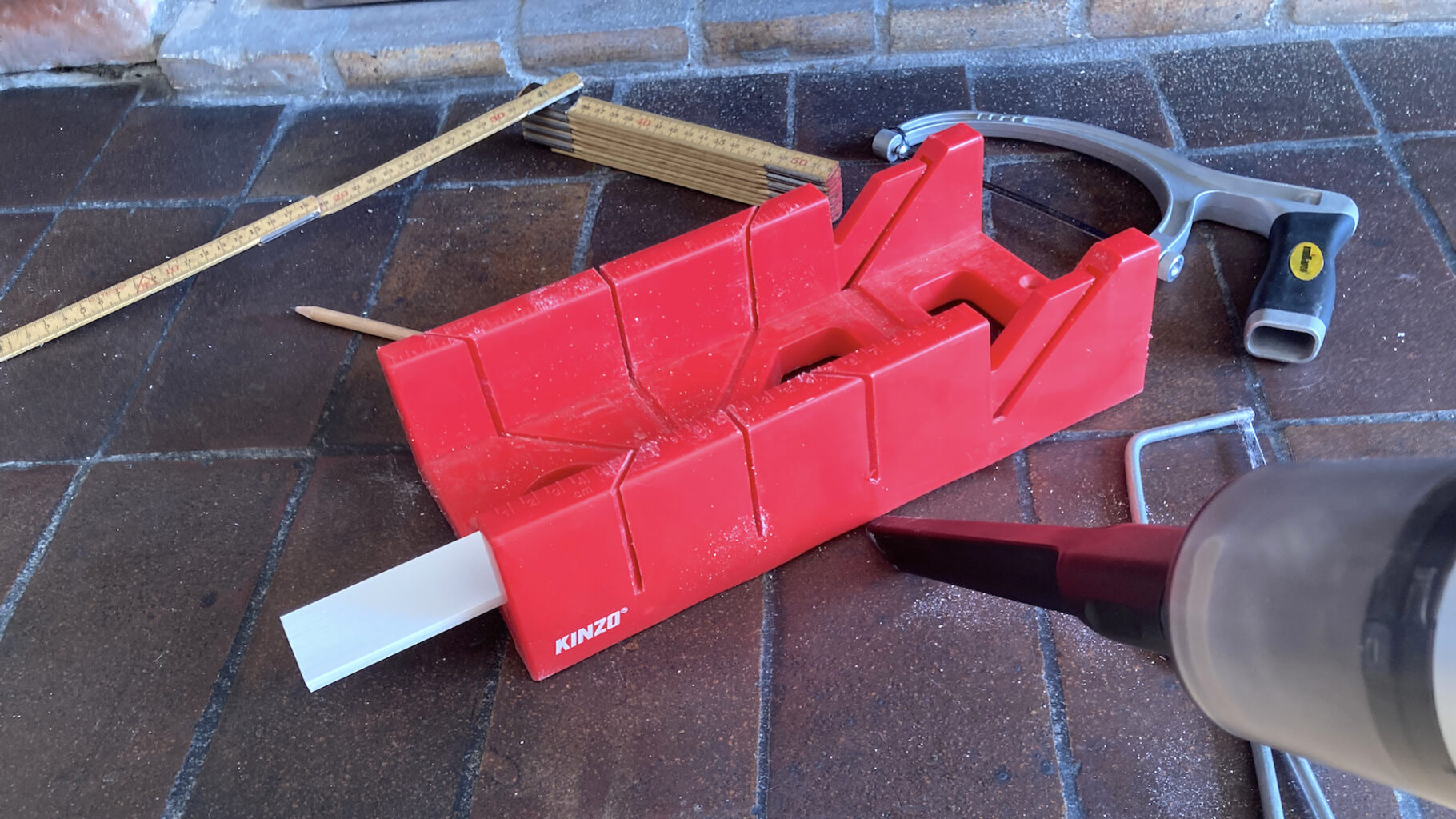
When I switched to the flat nozzle, the experience was less successful. Dirt and dirt particles could fall out again and I had an unpleasant déjà vu from the last time I owned a handheld vacuum cleaner.
Design and transport
The design of KitchenAid’s handheld vacuum cleaner is generally well thought out. The unit is round and narrow with no edges where dirt will settle. You can disconnect the dust container and filter and put the container in the dishwasher. The idea is fine. Personally, I wouldn’t put the dust container in the same dishwasher as glasses and crockery.
The handle fits well in my hand and is long enough for me to get around with the vacuum cleaner easily. I don’t have to move my hand on the handle when vacuuming. Unlike the two nozzles, the handle can’t be unhooked, so the vacuum cleaner takes up space if you want to transport it. 40 cm to be exact.
The design also has other limitations. When emptying the filter and dust container, you have to turn the entire body of the vacuum cleaner to release the lock. The movement causes the contents to shake, and I had a lot of dust and dirt whirled up into the air when emptying the filter.
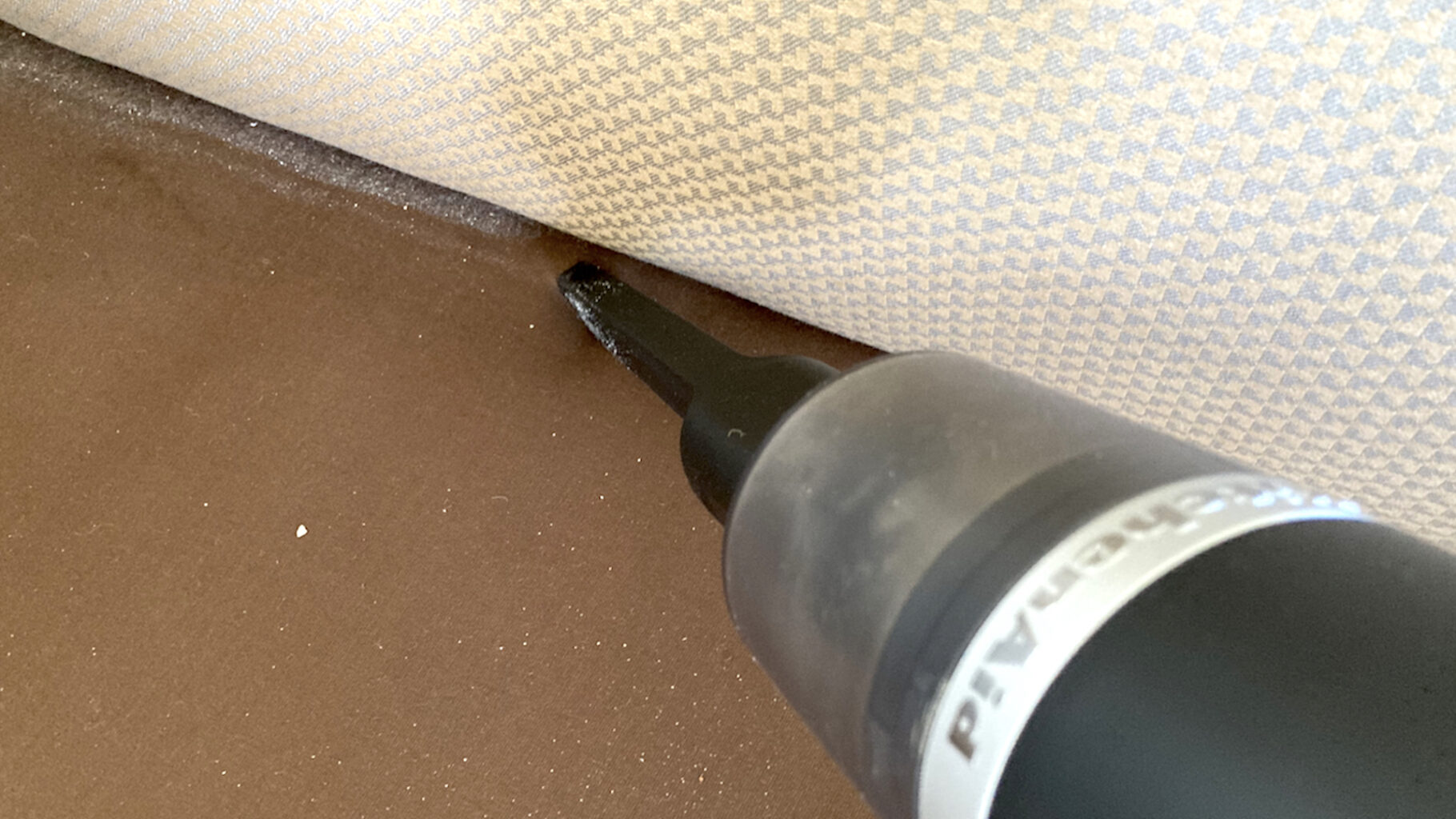
After a while, the filter will also need to be replaced. When, of course, depends on how often you use the handheld vacuum cleaner. A package of three new filters costs around €30.
Other members of the Go series
So far, KitchenAid’s range consists of six devices: Hand mixer, coffee grinder, mini chopper, blender, hand blender and hand vacuum. All can be purchased with or without battery.
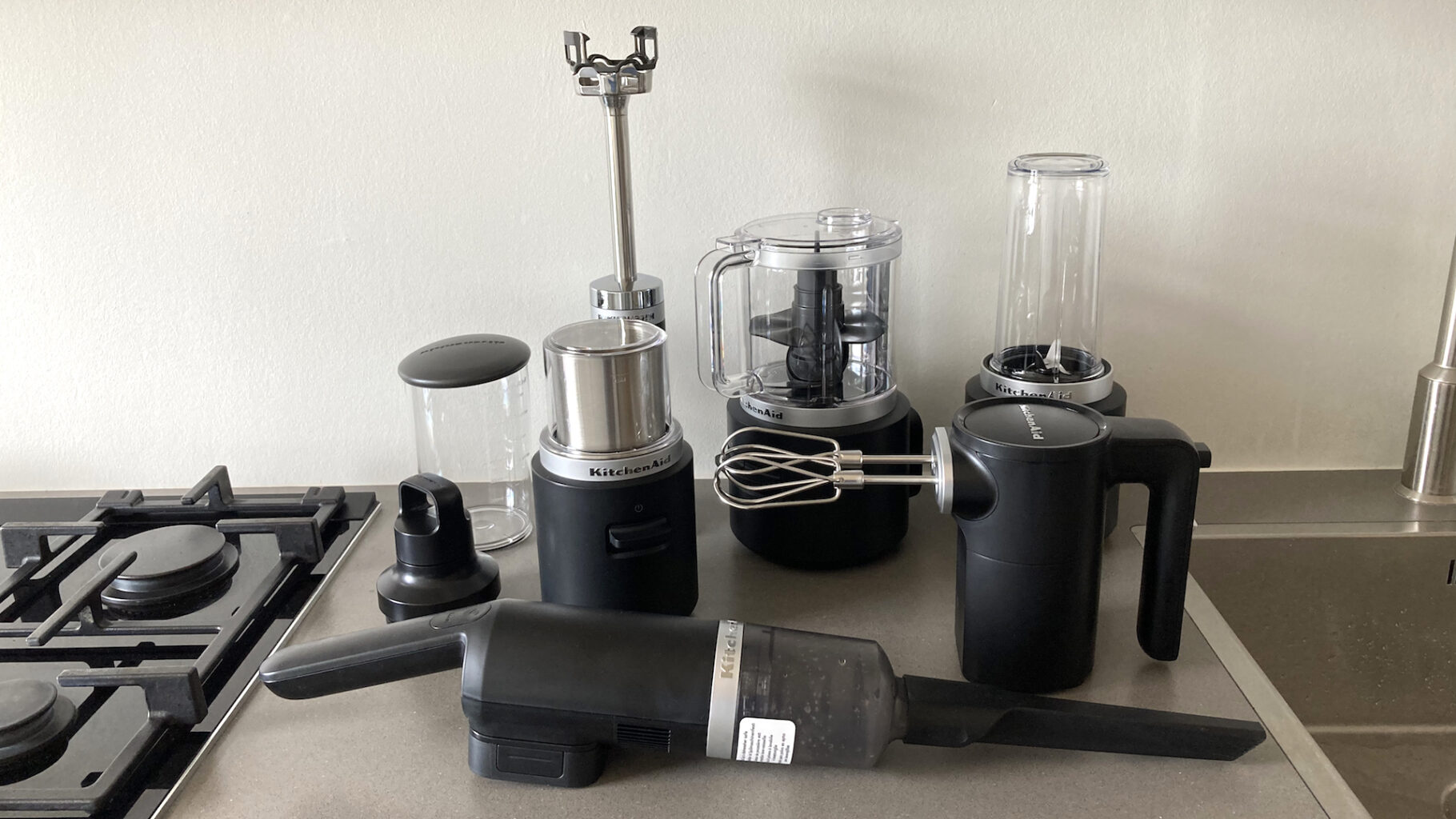
The kitchen units stood solid and stable on my kitchen table or lay well in my hand during use. They have the same matte black design and simple operation as the hand vacuum cleaner. No superfluous buttons or displays. However, several of them weigh quite a bit; 1.46 kilograms for the mini chopper (5KFCR531BM) and 1.16 kg for the hand blender (5KHM762BM). The weight is including the battery.
The KitchenAid Go series is not suitable for backpacking if you’re going hiking. However, with their compact design and shared battery, I would say that they can easily be useful at the cottage, on the boat or in the caravan. For example, if you need a blender or mixer for a special occasion outside the home and want to avoid buying a new one.
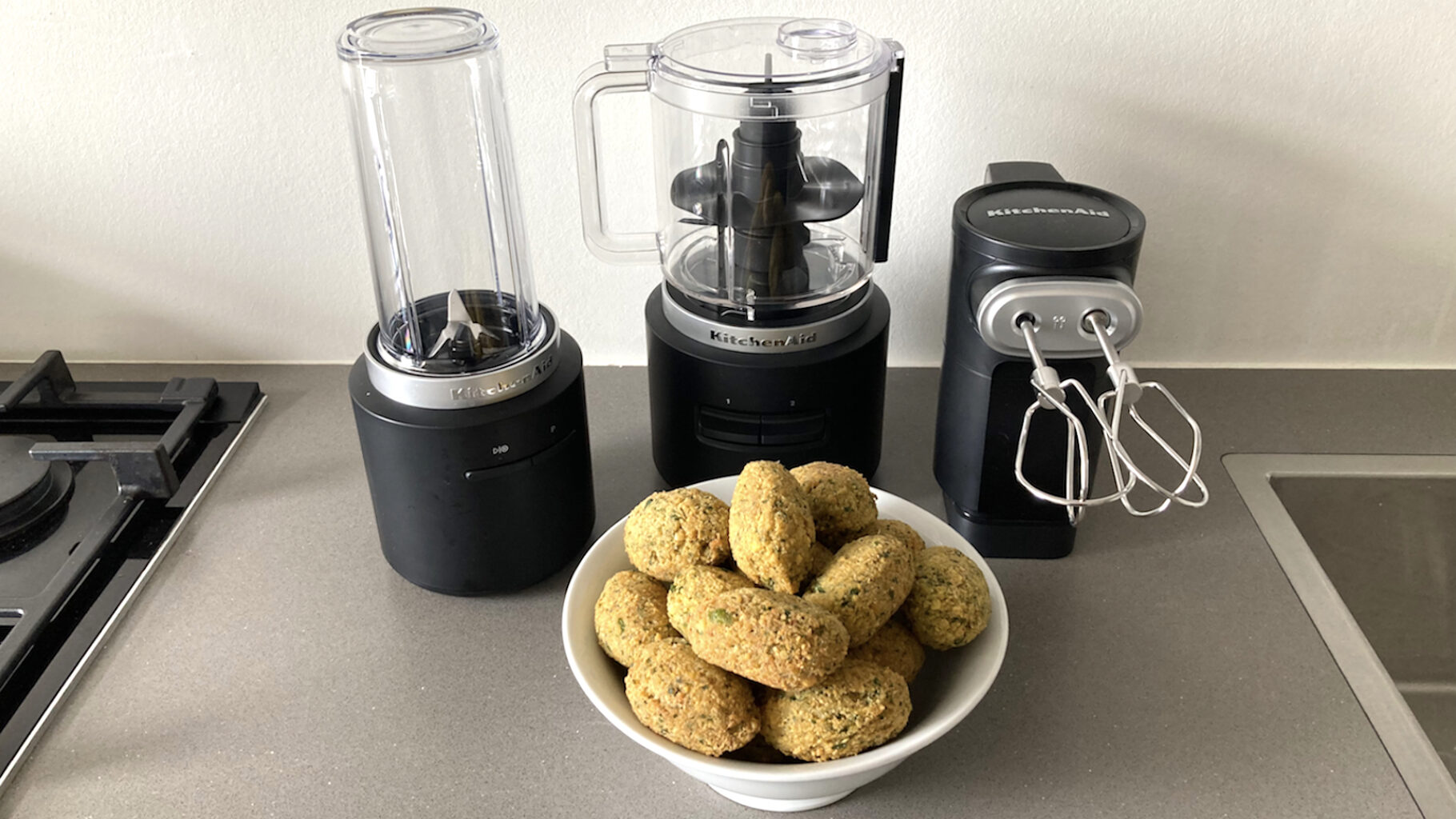
I tested the hand mixer, blender and mini chopper by making a batch of homemade falafels. The dish requires different kitchen tools. The KitchenAid Go appliances performed just as well as my wired, traditional versions.
Parsley leaves, chickpeas, spices and more were chopped, blended and mixed into a fine, uniform mash. The battery, which the devices shared along the way, still had 50 percent left when the task was fully completed after half an hour of preparation.
Conversely, I wouldn’t recommend the 5KBGR111BM series coffee grinder. When the grinder blade engages, the top layer of beans inside the bowl lightens. The result is unevenly ground beans. Also, some of the ground coffee stays at the bottom of the bowl, so you have to hit it against something to get it all out.
Conclusion
The KitchenAid Go series costs more than other appliances in the same categories. For example, you can get hand vacuums that cost less than half the price of the Cordless Hand Vacuum 5KKVR121BM, plus the cost of the battery, docking station and new filters.
Conversely, my experience with the Cordless Hand Vacuum has been almost entirely positive. You can see and feel that we are a few steps up the quality ladder. The hand vacuum feels good in the hand, it’s efficient and well-designed for easy cleaning and maintenance.
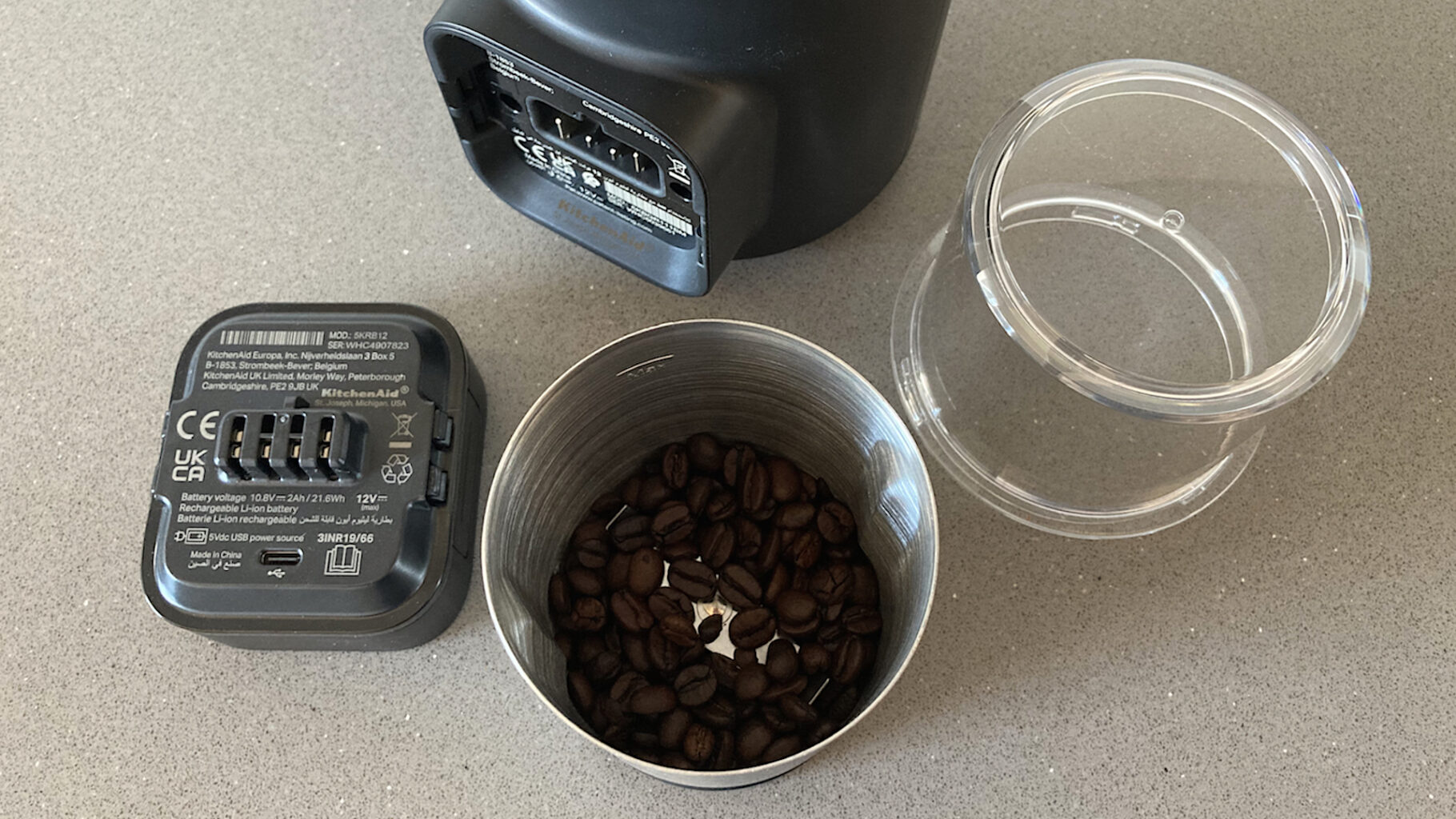
My objections are about emptying the dust container, which can stir up dirt in the air (tip: do it over the sink). The flat nozzle is less efficient and the length of the vacuum cleaner is a bit awkward for storage and transportation.
The concept of a shared battery and the ability to put the series parts in the dishwasher works well in practice. The compact, cordless design leaves plenty of space on the kitchen counter. Especially if you use several of the appliances at the same time.
Despite the name, the KitchenAid Go series appliances are not meant for mobile life. Instead, they’re great for smaller kitchens or places with few power outlets. The compact design makes them smaller than conventional household appliances, but they perform just as well. I haven’t had any complaints about my falafels yet.

179 €
Specifications
- Type: Handheld vacuum cleaner
- Dust container: 130 ml
- Suction power: Not stated (AW/Pa)
- Vacuuming: 2 levels (Normal: from 000 rpm. Boost: up to 38,000 rpm.)
- Sound level: Not stated (dBA)
- Dimensions and weight (WxDxH): 7.59 x 7.72 x 41.48 cm / 0.690 kg (without battery), 0.965 kg (with battery)
- Wireless/cordless: Yes
- Battery: Lithium-ion 10.8-12 V
- App control: No
- Battery life: Up to 20 minutes
- Charging time: 3 hours
- Extras: Two nozzles, external battery, dishwasher safe parts
- Web: kitchenaid.com

